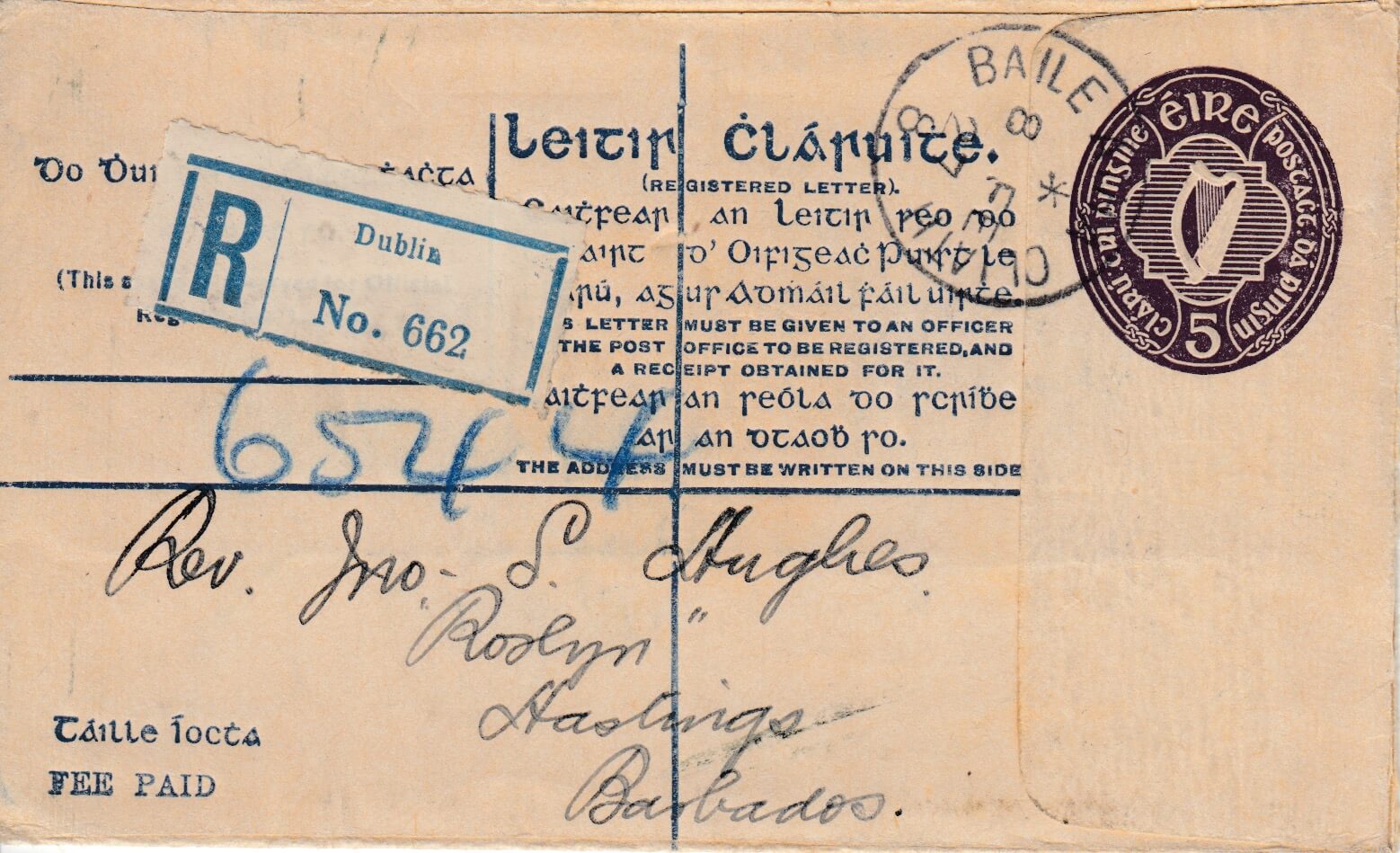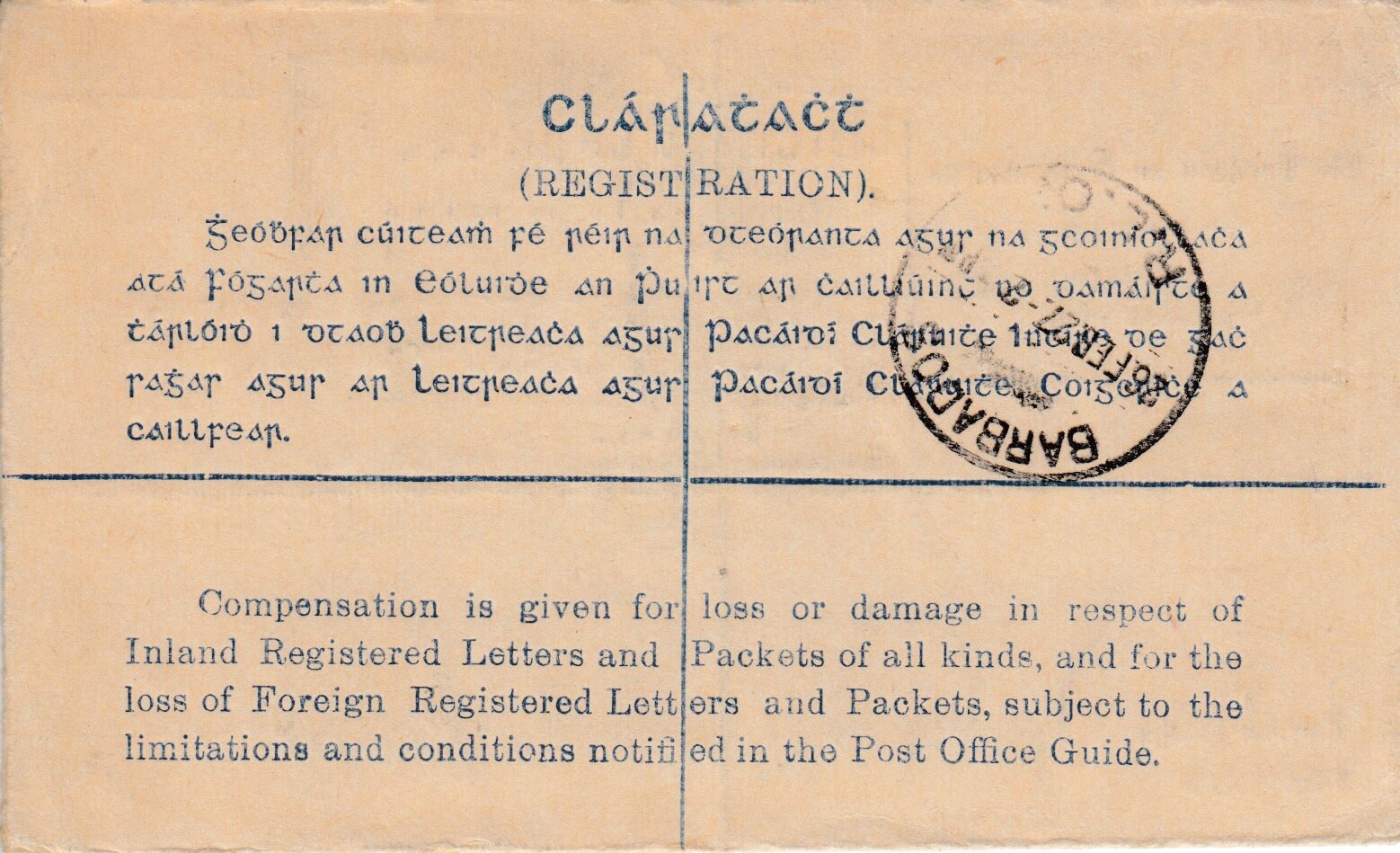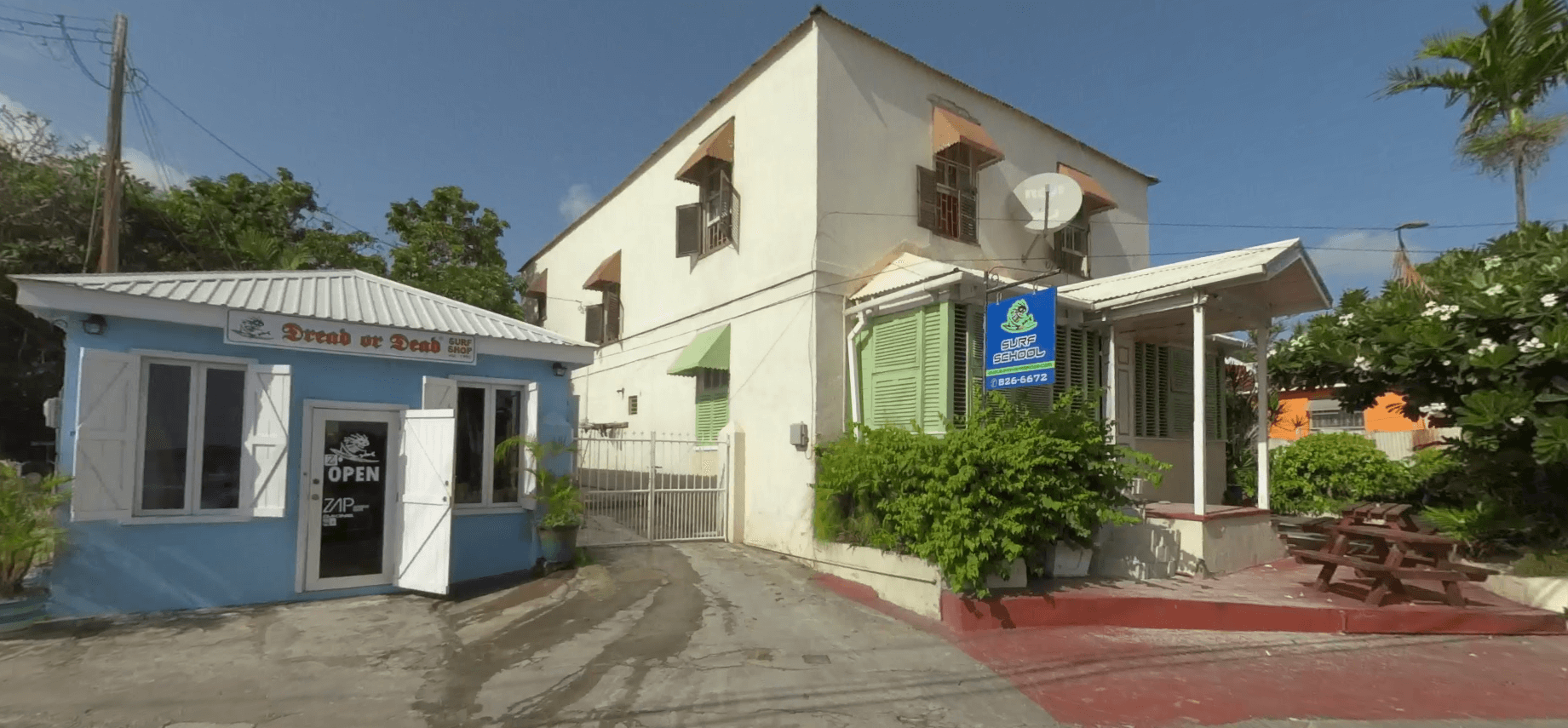
I don’t often pick up inbound mail to the island, focusing instead on mail out. The reason for this is that I started collecting the stamps of Barbados and, of course, inbound mail doesn’t have any Barbados stamps on it. Nevertheless, there are times when inbound mail can provide an interesting story or simply give an insight into the postal services of the time.
This Registered envelope caught my eye recently as I’d not previously seen a Registered envelope from Ireland inbound to Barbados. It’s a fairly standard cover, in decent condition, and sent from Dublin to Reverend Monsignor S Hughes, Roslyn, Hastings, Barbados. The Registered envelope is at the 5d rate, which is correct for mail to the West Indies and was sent on 8th February 1927, arriving on 26th February 1927, with a transit time of just 19 days.
Contrast that with a recent Registered letter sent to me from Barbados which took exactly the same time and you can see that despite a century of progress, very little has changed.


Checking online, it seems that Roslyn is still in Hastings, though known these days as Roslyn Cottage, and it’s in an area I know quite well, being just a short walk from where we like to stay on the South Coast.

The cottage today is a surf school, a far cry from somewhere a clergyman might live!
Of course, the contents of the letter are long gone and there are no markings anywhere to suggest who might have sent it, or why, but it is still fascinating to see that correspondence from the newly formed Ireland (split from the UK in 1922) was being sent halfway across the world to a small island like Barbados. Today, sending a similar letter from Dublin to Barbados would cost you €8.70 and take between 8-11 working days, which shows what a bargain it was back in 1927.
We sometimes take for granted the postal serivce we currently have, but we do so at our peril. This cover shows how much of a lifeline it was a century ago and despite all our advances in technology, we should strive to retain this type of service for as long as we can.
